#African religions
Explore tagged Tumblr posts
Text
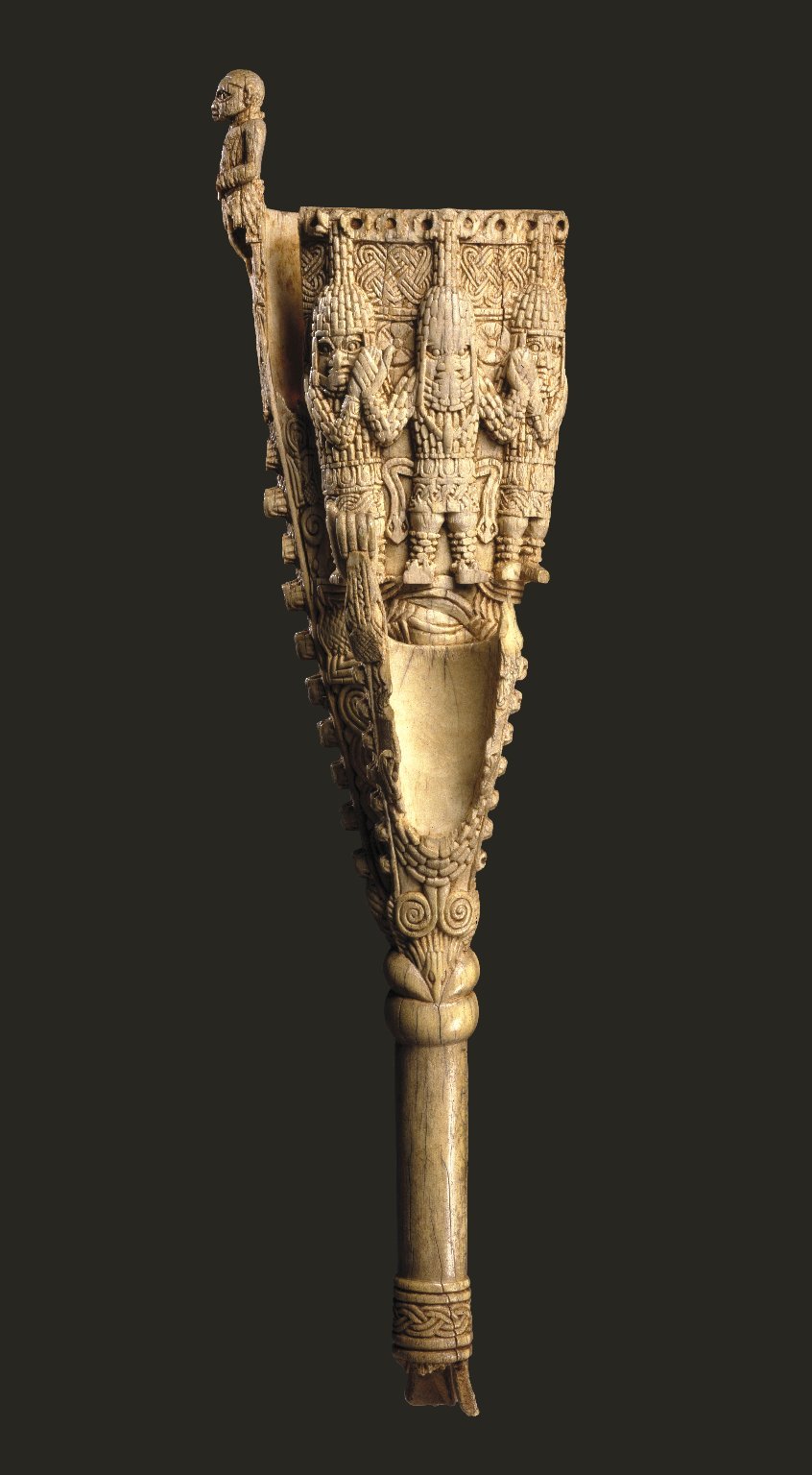
Ivory double bell (egogo) from the Benin kingdom in present-day Edo State, Nigeria, depicting the oba (king) with his arms upheld by two attendants, possibly high priests. The oba wielded the egogo during the Emobo rite that concluded the Igue festival, using its sound to repel troublesome spirits. Artist unknown; early 16th century. Now in the Brooklyn Museum. Photo credit: Brooklyn Museum.
#art#art history#Africa#African#African art#West Africa#West African#West African art#Nigeria#Nigerian art#Kingdom of Benin#Benin art#sculpture#ivory#ivory carving#African religions#16th century art#Brooklyn Museum
157 notes
·
View notes
Text
5 Black Gods Whitewashed in Recent History

The Brahma Samhita is a Sanskrit Pancaratra text composed of verses of prayer spoken by Brahma glorifying the supreme Lord Krishna or Govinda at the beginning of creation.
The lyrics, chapter 5 verse 38 reads: “I worship Govinda, the primeval Lord, who plays on His transcendental flute. His eyes are like lotus flowers, He is decorated with peacock plumes, and His bodily color resembles the color of a fresh black cloud, although His bodily features are more beautiful than millions of Cupids.”
Chapter 6, verses 1-2 reads: “The Lord was dressed in yellow garments and had a blackish complexion.”
The Sanskrit word “Krishna” has the literal meaning “black,” “dark” or “dark-blue.” Krishna is also called “Śyāma,” the blackish one, or the beautiful dark boy with a blackish color.




12 notes
·
View notes
Text
youtube
Today, August 11th of 2023 will complete one month my father made his passage. He was a babá, a priest of the Afro-Brazilian religion named Umbanda, where we essentially worship nature and its spirits, powers and deities, mostly called orishas.
My sister is a musician, just like he was and she paid this tribute to him with two traditional ritualistic invocation songs for the Orisha Oshun, the one who assisted him, his Mother.
I will provide the lyrics below, in Yoruba, Brazilian Portuguese and English. If you can give the video a thumbs up or a comment, it would make us both very happy.
We hope you enjoy it and that we were able to bring you some of our culture and religion to you, just like he would want it.
Osun ya mi oh
Osun sole ni fo mi
Elou odô already fun la yo
Jakunan yo ke rê e
Oxum, Mãe das Águas
Oxum está sobre mim
Senhora do rio de peixes felizes
Peixes graciados no caminho de felicidades
Oxum de Osogbô
Oxum Mãe das Águas.
Oshun, Mother of Waters
Oshun is above me
Lady of the Happy Fish River
Fishes graced the way to happiness
Oshun of Osogbo
Oshun Mother of Waters.
Iyê iyê, yêyê ô (Mãe, Mamãe)
Mother, mommy
Iyá Òsun ni ilé (A mãe Òsun está na casa)
Iyá Òsun ni ilé (A mãe Òsun está na casa) 2x
Mother Osun is in the house
Omo ni ilé okán mimo (Os filhos que estão na casa possuem um coração santo)
The children who are in the house have a holy heart.
Iyá tundè Iléshà, Iyá tundè (A mãe retornou para Ileshà, a mãe retornou).
The mother returned to Ileshà, the mother has returned.
Iye ku aabo, omi rê, yèyé o (A mãe é bem vinda, a água é sua, mãe)
The mother is welcome, the water is hers, mother.
Omo ni ilé okán mimo (Os filhos que estão na casa possuem um coração santo)
The children who are in the house have a holy heart
Iye ku aabo ìré o (A mãe é bem-vinda em Ìré)
Iye ku aabo Ijëshà (A mãe é bem-vinda em Ijëshà) 2x
The mother is welcome in Ìré
mother is welcome in Ijëshà
Iyê iyê, yêyê ô (Mãe, Mamãe) 2x
Iyê iyê, yêyê ô (Mother, Mother)
#Youtube#umbanda#african religions#afro brazilian#candomble#oshun#oxum#orisha#orixas#religion#world religions
46 notes
·
View notes
Text
youtube
Religions of the African Diaspora | Crash Course Religions #11
African religions include Islam and Christianity, but also hundreds of diverse and complex indigenous religions. In this episode of Crash Course Religions, we explore those traditions and how, when forced intro adaption-mode as a result of the slave trade, they became a unique blend of cultural influences in the African diaspora.
#religion#african religions#african diaspora#vodou#vodoun#santeria#candomblé#yoruba#slavery#religion 101#crash course religions#video#divinum-pacis#Youtube
4 notes
·
View notes
Text
As I am making my way down the Dictionary of Female Myths, I thought of sharing some articles not about the Greco-Romans for once! And since we are in summer – it means beach, water, sea – so welcome this loose translation/vague recap of an article about the myth of the Mamy Watta, written by Lilyan Kesteloot!
Kesteloot presents the myth of the Mamy Watta as being present across most of the shores and coastal areas of Africa, and as an equivalent to the myth of the mermaid in Europe. Like her, the Mamy Watta is a “lady of the waters” or a “water woman” who lives in the depths of the sea, and has an habit of seducing human men – but any further correspondence between the two legends stops there.
The several Mamy Watta (aka, “mamy water”) find their origins in the religious animism of the continent: they are first and foremost spirits and goddesses that received a worship. For example, the sea goddess Yemandja wo is present among the pantheons of the Yoruba, Ewe and Fon (Nigeria, Togo, Benin). The imagery of the rituals depicts Yemanda with long black hair contrasting with a light-colored skin ; often her half-naked body is surrounded by a long snake. She has her own priestesses, and her faithful followers: her cult and myths were transported, almost without modification, to Haiti and Brazil, due to most of the imported slaves of these countries coming from the South-Western coast of Africa. But the Mamy Watta of Africa is also found all throughout the Antilles (West Indies), under the name of “Manman di l’eau”.
On the shores of Senegal, the myth of the Water Lady is very active and linked to specific rituals. She is one of the “rab”, the genies that haunt the sacred places of the country, and to which one must make sacrifices only when they manifest. The sea-rab appears in men’s dreams and “calls” for them. The one who has been “called” during his sleep must answer this call, or face grave troubles. Usually he mut go see a specialist, a “ndeupkat”, who will reveal to him the name of his rab, how to satisfy it, and what he is forbidden to do. The man will have to regularly offer the rab milk and millet porridge, and it will become his personal protecting spirit. This alliance can however enter in conflict with the man’s human marriage, or the relationship between the man and the rab can deteriorate if there is a form of negligence. Then, the rab becomes not a protector but a tormentor, by disturbing the spirit and twisting the behavior of the “unfaithful” partner. The man will either suffer from a madness in the form of regular mental breakdowns, or from a long and deep depression. This type of rab-caused disorders are well-known among the Wolof, Lébou and Sereer. To heal the victim, one must gather specialists to organize a “Ndeup”, a ceremony which lasts from three days to a week. Its purpose is to reconcile the sick man and his rab, by sacrificing a cow, painting the man with the cow’s blood and making him drink it, then covering him with white veils. The rab is prayed to with lengthy melodies, and finally one must take the sick man take a bath in the sea – supposedly healing him and reconciling him with his “sea-bride”. To put it briefly: one can never get rid of a sea-rab, one must simply learn to live with it. The rab can sometimes appear not as a woman, but as a man – however in these cases, it always calls out to women rather than men.
Another type of Mamy Watta manifestations can be identified at the mouth of rivers. It is considered that these legends were born out of the sighting and presence of manatees/sea cows, large sea-mammals with breasts: they are perceived as the manifestations of the water-spirit in countries such as Cameroun, Gabon and Congo. The encounter with these spirit-women is not codified by religion: rather, when someone is harassed by one, it is considered as a charm or spell that must be dispelled by a healer. However, among the Douala, the “Djengu” is a key part of the initiation rituals of the Ngondo society.
Finally, sometimes the Mamy Watta can live inside the continent, in lakes and rivers. We know, for example, of Faro, the twin sister of the god Pemba, a primordial goddess of the Bambara mythology. She lives within the Niger river and commands fecundity, both human and vegetal. She is linked to the problems women must face, and to the rituals surrounding the birth of children. She has priests dedicated to her: she can appear as a woman, but usually manifests as a fish ; specific fish species, such as the catfish, are considered her companions. Further away in the Niger river, by the area of the Niamey, another water-spirit rules: Harakoy. Legend claims she was a Fulani woman who was seen naked in her bath, and out of shame she threw herself in the river, never to come out of it again. Ever since, she lives in the water: the fishermen worship her, and so do the Sonrhaï, riverside farmer, and she regularly appears by the side of other local deities. There is also Mame Coumba Lamba, who rules over the Senegal river and the city of Saint-Louis: she is said to be responsible for either the abundance or rarity of fishes, as well as the sudden floods of the river. A last example would be Mame Yungume, who haunts the mouth of the Gambie and Saloum rivers.
The presence of those water-goddesses is very prominent across the African continent, not to say almost banal – and those listed above are but a handful of them. It is notably because the myth of the Mamy Watta is still very much alive and active in Africa, unlike the legend of the mermaid in Europe. Be it individual or collective, as a long as a myth finds roots within rituals or a cult, it becomes part of the religion. Most of the legends described here are tied to local religions still in full strength today, while the sirens of Odysseus or the Little Mermaid of Andersen were reduced a long time ago to mere literary figures.
The image, or rather the very concept of the “women” that comes out of those water-ladies is not clear-cut or one-sided. If in Europe the mermaid is always a beautiful seductress who is dangerous to the sailors, in Africa the appearance and roles of the Mamy Watta are diverse. The rab described above, for example, are not particularly graceful or charming – they can even appear as old people, since they are called “Mame”, which means “grandmother”. Their manifestations are sometimes scary, and they can sport monstrous appearances. As for Faro, the main goddess of the Bambara mythology, she appears to her chosen ones as a mother rather than a wife, when she doesn’t take the shape of a giant fish.
The behavior of the Mamy Watta is ambivalent, and mankind’s alliance with them just as ambiguous. If one honors and worship the Mamy Watta, she will favorize you. But if you offend a Mamy Watta, by either transgressing a rule or neglecting a sacrifice, she will get angry and persecute you. But are they more demanding or capricious than the other spirits and gods of Africa? One cannot really claim such a thing, their role even seems to be quite positive: they do not wish the destruction of their human partners. They are rarely wicked, as long as the terms of their alliance/union are respected ; and this is unlike Mousso Koroni for example, the goddess of disasters of the Bambara cosmogony, who takes the appearance of a witch and always manifests herself with violence and destruction.
Sometimes, the Mamy Watta can be androgynous, sporting masculine traits ; other times they actually have a family of their own: Faro for example was said to have a husband, and Faro-children who stole vegetables from the gardens near the river. The Mamy Watta, whose tales are always told by moonlight, are always ambiguous, as much in their role as in their gender.
#mamy watta#african legends#african myths#mermaid#african goddesses#african religions#yemandja#bambara mythology#faro#mythological archetypes
6 notes
·
View notes
Text
A History Of The Yoruba People
youtube
19 notes
·
View notes
Text
youtube
African gods vs European God’s.
#religions#african#african religions#african culture#black god#cultures#ghana#ghanaian#ghanaian cultures#ga#gadangme#Youtube
1 note
·
View note
Text
Witchcraft and Sorcery in African Tradition
Witchcraft and sorcery have deep roots in African traditions, varying significantly across different cultures and regions. These practices often play a crucial role in shaping social dynamics and addressing community challenges. Key Aspects of Witchcraft and Sorcery in African Tradition: Cultural Significance: Witchcraft in Africa encompasses a range of beliefs and practices that are integral…
1 note
·
View note
Text
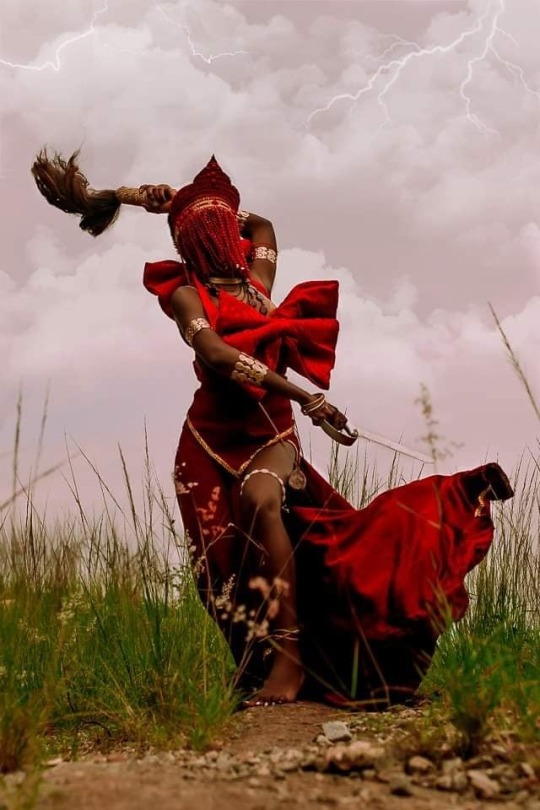






#you scared go to church#hoodoo#conjure#rootwork#roots#voodoo#beauty#black power#black people#orishas#witchy#black spirituality#african traditional religions#level up#black history#black women#black men#melanin#black magic#gentillmatic#black tumblr#black beauty#black experience#spiritual awakening#spirituality#folk magic#plant based#ifa#obeah
731 notes
·
View notes
Text

#oshungoddess#oshun#santeria#candomble#yoruba#ifa#aesthetic#atr#african traditional religions#orishas#ogun#hoodoo#african spirituality#afro witch#witches of color#west africa#florida water#oxum#keys#yellow flowers#iron#altar#my altar#offerings#blessings
491 notes
·
View notes
Text




























Annette Meets Ogun Castlevania Nocturne 2x6 "Ancestors"
#castlevania nocturne#castlevania#religion#african history#black history month#black is beautiful#must see tv#the hype is real
196 notes
·
View notes
Text
Palo Mayombe: Kongo-derived Afro-Cuban Spirituality — Lawrence Talks!
“This complexity described in the Bantu-Kongo word for person, muntu is a ‘set of concrete social relationships ... a system of systems; the pattern of patterns in being.’ The person is contextualized as a system participating in other systems, a pattern, a ripple that is sourced and from a source.”
— Kimbwandende Kia Bunseki Fu-Kiau, African Cosmology 42
Dr. Kimbwandende Kia Bunseki Fu-Kiau, a Congolese native and scholar of African religion, captures the essence of Kongo cosmology with this quote, and from this cosmological structure lies the roots of the African diasporic religion Palo Mayombe. Just as a person is “a system of systems; the pattern of patterns in being,” ancestral reverence and inclusion positions humans through a multitude of bodies that have come before them. Ancestral veneration is at the core of many African Diasporic spiritualities. Many individuals who grew up in traditional Christian churches are leaving beliefs of Christendom in search for traditional religions that help them connect with their ancestors. Religious and spiritual systems like Ifa, Santeria, Vodou and Conjure have been popularized, sometimes in negative ways by the media, but for the most part these are the spiritualities that people turn to first in their exploration of African traditional religions (ATR). And what is known of Palo Mayombe by the general public is not a large amount of information by any chance. A Google search locates some articles which picture Palo as the “dark side” of Santeria, which is far from the truth. However, to understand Palo as a distinct spiritual system outside of other African diasporic religion, one must understand its BaKongo cosmological foundations.
History of ancient Kongo cosmology
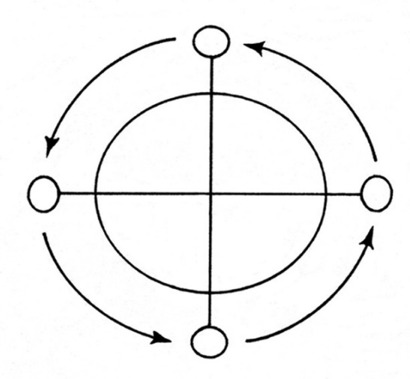
Figure 1: Kongo cosmogram (dikenga)
Fortunately, there is a symbol that captures the essence of Kongo cosmology. The Kongo cosmogram is a cosmological symbol that represents the very patterning of the life process. This symbol is a pre-colonial representation of the cosmogram, as it was conceptualized before European colonization in 1482[1]. It is called the dikenga in the KiKongo language, literally meaning “the turning;” it stands for the cycling of the sun around four cardinal points: dawn, noon, sunset, and midnight when the sun is shining in the world of the dead. Composed of a cross, a circle, and usually arrows, this symbol was found in Kongo material culture well before the contact of colonial Christianity and its cross motif. Anthropologist Robert Farris Thompson, a scholar of Kongo art and religion, says that the “dikenga represents the ultimate graphic design, containing key concepts of Bakongo religious belief, oral history, cosmogony, and philosophy, and depicting in miniature the Bakongo conceptual world and universe” (Thompson 110). The key principle of the dikenga is that nothing ever survives “intact” because nothing ever survives in a fixed form. It is this spiral that is the basic element of Kongo spirituality.
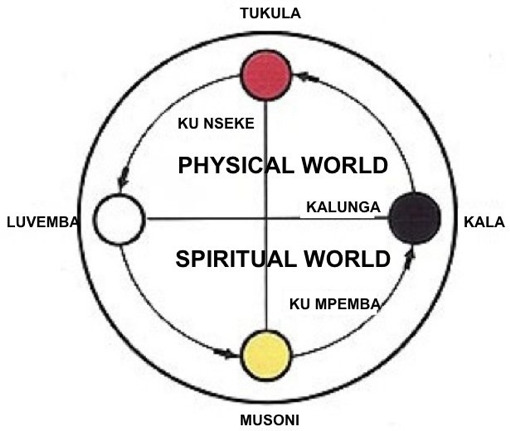
Figure 2: Dikenga
In his seminal piece on Kongo cosmology entitled African Cosmology of the Bantu-Kongo: Principles of Life & Living, Dr. Fu-Kiau explains the motion of the dikenga as the process of ancestralization, of dying and being reborn as an ancestor, through the heating and cooling of existence. This explanation of death and ancestralization is at the core of Palo Mayombe.
Origins of Palo Mayombe
Palo Mayombe is a Kongo derived religion from the Bakongo Diaspora. This religion was transported to the Caribbean during the Spanish slave trade and sprouted in Cuba mostly and in some places in Puerto Rico in the 1500. As the enslaved were forced out of their homelands, their beliefs went with them. Spanish colonialists in Cuba initiated a strategy in the sixteenth century to create mutual aid societies, called cabildos or cofradías, which served to cluster Afro-Cubans into different ethnic categories. This was a strategy of “divide and rule” designed to foster social differences across groups within the enslaved population so that they would not find a unifying focus through which to rebel against the colonial government. In contrast to the extensive blending of diverse African cultures that would be seen in Haiti and Brazil, Cuban cabildos contributed to rich continuations of Yoruba culture in the development of Santería and to largely separate developments of BaKongo beliefs in Palo Mayombe (Fennel). Elements of Catholic beliefs were incorporated into both Santería and Palo Mayombe due to the imposition of the Spanish colonial regime and the cabildo system.
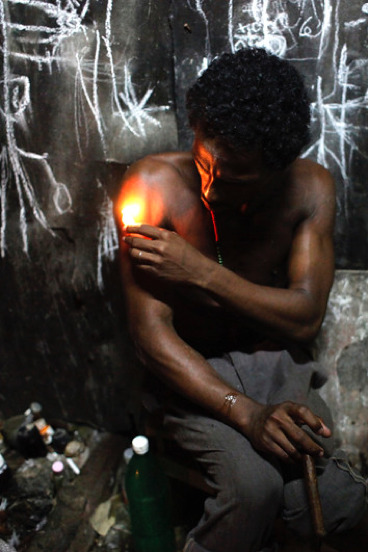
Figure 3 Palo Mayombe Ceremony
Palo Mayombe is very nature-based. Although most African Diasporic religions base rituals and practices in nature, palo (meaning “stick” or “segment of wood” in Spanish) solely depends on the material elements of nature to access the spiritual realm. In Cuba, the Kongo ancestor spirits are considered fierce, rebellious, and independent; they are on the “hot” scale of natural forces. Just as the importance of ancestralization mentioned above, the ancestors are present and inclusive in the practitioner’s life. Nzambi Mpungo is the greatest force in which paleros or paleras (Palo practitioners) call God. Nzambi Mpungo is literally the first ancestor, the initial iteration which all human life flows. Nzambi was viewed as having created the universe, people, spirits, transformative death, and the power of minkisi (ritualized, material objects). The Godhead was thus viewed as being removed from mortal concerns, and supplications were made instead to the ancestor spirits or the intermediary spirits created by Nzambi. Below Nzambi are the mpungus (elemental forces), the ancestors, and the spirits of natural forces (Bettelheim). Each mpungu is similar to an orisha from Yoruba culture due to shared African derived origins, but the two are not the same entity by any means. The mpungu are Afro-Cuban spirits, specific to their diasporic groundings and to the lands of the Diaspora. However, due to their origin
The material tools of Palo Mayombe
Cigars are used to enter into a trance-like state in order to more easily connect with spirits. Special machetes and chains are also used in spirit pots. Candles and rum are essential elements for any Palo ritual. The nganga is used to describe an iron cauldron filled with dirt and specialized sticks; this aids the palero/a in communication with the spirit. In Central America, Cuba and the Caribbean, this cauldron is called a Nganga-Prenda because the culture of modern day and the influence of Latin American's spiritualism in Palo Mayombe.
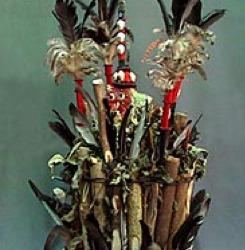
Figure 4: Prenda de Lucero
The Muertos are important entities in the Palo religion. The house of the dead is where the Palo spirits and the ancestors reside. As illustrated through the Kongo cosmogram above, Palo cosmology does not believe in death, but a continual cycle through various forms. It is the process of ancestralization that makes communication with the spirits of the dead accessible. In the Kongo tradition, ancestors, who have access to invisible forces, have the duty to protect the living. In exchange, the ancestor’s descendants have the obligation to take care of the ancestor’s memory and to venerate their earthly representation. This is why bones are another central tool in Palo. After a person has passed, the bones remain, and the bones carries the essence of a soul long after a person is gone. Bones are thus a sacred item in Palo Mayombe and are usually incorporated in Palo rituals. Usually an ancestor altar is an essential piece in the house of a palero/a, along with offerings of food, drink, and special itemize to venerate their ancestors.
Like many ATR’s and magical system, initiation of some kind is needed in order to practice. Guidance from the elders of the religion is highly encouraged, especially since the ways of the spiritual system is nothing like physical realms.
Palo Mayombe and Other Religious Connections
The influence of Palo Mayombe can be found in Central America, Brazil, and Mexico and in the United States. There are different sects of Palo (Palo Monte, Christian-based Palo, Jewish-based Palo) that come from different lineages and distinct engagements with the cultural environment around the practice. There is another Kongo-derived religion in Brazil is Quimbanda, which is a mixture of traditional Kongo, indigenous in India and Latin American spiritualism. Palo Mayombe is the engagement of Kongo influence in the Caribbean and the wider Diaspora. It has its own priesthood and set of rules and regulations. Rules and regulations will vary according to the Palo Mayombe house to which an individual has been initiated into.
Some people who practice Palo might mix other African-derived systems, like Ifa, Vodou, or Santeria, but Palo is a religion in its own right. For example, Yemoja, the orisha of the ocean and motherhood, may be seen as the same energy as Madre de Agua, the mpungo of the ocean and of motherhood. Although these spirits may have similar functions within the religions, they are two separate entites from particular cultural origins and with specific needs. It is quite common for spiritual seekers to be initiated in multiple religions, so it is of great importance to make sure each path is approached. Although there are other religious elements in Palo, it is all included in the practice and not separated within the religion. When Portuguese missionaries brought the message of Christianity to the Kongo/Bantu, the natives embraced it…while continuing their own native practices (Jason R. Young, Rituals of Resistance). So, this pattern of centripetal inclusion is also present in Palo Mayombe. As Iya TeeDee Oshún, a priestess of African diasporic religions, commented in a recent Facebook post:
“Palo is a beautiful road for those of us that it is for. It's also not just some shit you get done real quick before you ‘elevate’ because that's what Iya's spirit guide said to her in the shower. (Not making that up at all.) It's definitely not Iya nor Baba's "witchcraft pot" in the closet or behind the washing machine or above the grease stain in the garage. It's rarely what I hear when people talk to me in Yorabalese” (2019).
Iya’s mention of “Yorbalese” speaks to a common trend of people in the Diaspora making all of African-derived religions about orisha Ifa/Nigeria, but Palo is of the BaKongo Diaspora. The only system close in origin and practice to Palo is African American Hoodoo, which uses similar elements of the heating and cooling of herbs in spiritual work.
Conclusion
When one decides to take a step into the spirituality of Palo Mayombe, the journey really is a deep engagement with their ancestors and with the raw elemental forces of nature. It is a spiritual awareness that provides protection for the community and the self. The ancestors are the root of one’s existence; the root is the culminating point from which all life springs. This Afrocentric view of cosmology in which Palo Mayombe is grounded, deals with the consciousnesses of nature and of ancestry. Anyone who claims Palo Mayombe as a “dark” or unorthodox religion does not understand the Kongo origins of which Palo operates.
[1] The Kongo cosmogram is a pre-Christian symbol, but due to the iconography of the Christian cross, many people overlap their meanings
#Palo Mayombe Kongo-derived Afro-Cuban Spirituality#Palo#ATR#Congo#African Cosmology#Ancestry#African Religions#IFA#Palo Monte#Kongo
7 notes
·
View notes
Text
#black history#african#african traditional religions#africa#black people#blacklivesmatter#black lives matter#black culture
269 notes
·
View notes
Text

#dr John Henrik Clarke#black people#black#black history#black tumblr#blacktumblr#pan africanism#black conscious#africa#black power#black empowering#religion
89 notes
·
View notes
Video
youtube
Cuba: Descendants from slavery tell their story | SLICE
Andrea and her husband are descendants of the slaves who arrived in Cuba in the 18th Century. They are today the presidents of the Tumba of Santiago, a living culture brought to Cuba by slaves. To perpetuate tradition, they take the children in hand and teach them how to play and sing. They struggle to teach younger people so that the Tumba lives on.
6 notes
·
View notes
Text

Kingdom of Benin, Edo, Now Benin City: The Benin Kingdom was a flourishing ancient city situated in modern day Nigeria. During pre colonial era, Benin was one of the many highly developed cultures in Africa. The historical kingdom of Benin was established in the forested region of West Africa in the 1200s C.E. According to history, the Edo people of southern Nigeria founded Benin... The Kingdom of Benin, also known as Great Benin or Benin Kingdom is a kingdom within what is now considered southern Nigeria. Wikipedia
#Kingdom of Benin#Edo#Now Benin City#Monarchy#The ancient great benin empire#Edo Religion#africa#african continent
89 notes
·
View notes